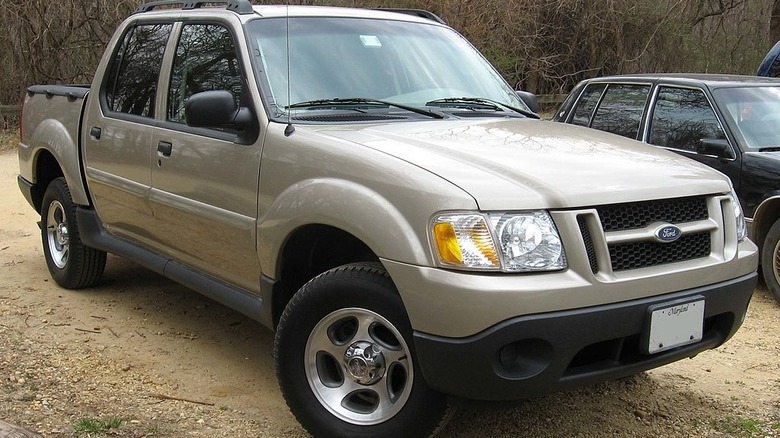Why Did Ford Discontinue The Explorer Sport Trac?
The Ford Explorer Sport Trac became one of the Blue Oval's first midsize pickup when it debuted in 2001. Slotting between the compact Ranger pickup and full-size F-150 truck, the first-generation Explorer Sport Trac shared most of its truck-based ladder frame underpinnings and body panels with the second-gen Explorer SUV. However, it came with a 4.2-foot composite bed that Ford engineers designed explicitly for the Sport Trac model.
The Explorer platform was a best-seller for Ford during the late '90s and early 2000s. Combined sales for the Explorer, Explorer Sport Trac, and Mercury Mountaineer peaked at nearly 557,000 units in 1999. The automaker never published how many Sport Tracs it sold yearly, but industry estimates put it at 20% to 25% of Explorer sales. The Sport Trac was not as popular as its Explorer SUV sibling, but the former's unique SUV/pickup truck styling, torquey 4.0-liter V6 engine, and available all-wheel drive (AWD) was too hard to resist for active, outdoorsy buyers.
Sluggish sales spelled the end of the Explorer Sport Trac
Ford was selling Explorers — and Explorer Sport Trac and Mercury Mountaineer derivates — like hotcakes before the dawn of the new millennium. But less than a decade later, the market was transitioning to the growing crossover trend. Unlike the Explorer Sport Trac and its rugged body-on-frame platform, crossovers feature car-based unibody architectures. The benefits are lighter construction, niftier handling, a smoother ride, and better fuel economy.
The downside is lackluster towing and off-road utility. No crossover could match the Explorer Sport Trac's beefy 7,160-pound max towing capacity and genuine off-road capabilities, especially with all-wheel drive. However, buyers who once loved the idea of a gas-guzzling midsize truck were either shifting to more fuel-efficient cars or stylish crossovers by 2008, and the sales numbers are proof.
Ford only sold 78,439 Explorers during the period, and sales went further down to 39,000 units by 2009. The second-generation Ford Explorer launched in 2007 after skipping the 2006 model year, but failed to stop the sales slump. It may have something to do with the Explorer Sport Trac receiving a poor safety rating from the NHTSA due to a higher incidence of rollover in an accident, but the writing was on the wall anyway.
By then, Ford had shifted its priorities to its new car and crossover lineup: Headlined by the Focus, the Euro market Fiesta supermini, and the fifth-generation Ford Explorer that sported a unibody, car-based architecture based on the Ford Flex and Lincoln MKT. Production ended for the Explorer Sport Trac in 2010. It remains a pleasant oddity in the Blue Oval's history and is one nameplate deserving of a comeback.
[Featured image by IFCAR via Wikimedia Commons | Cropped and Scaled | Public Domain]

